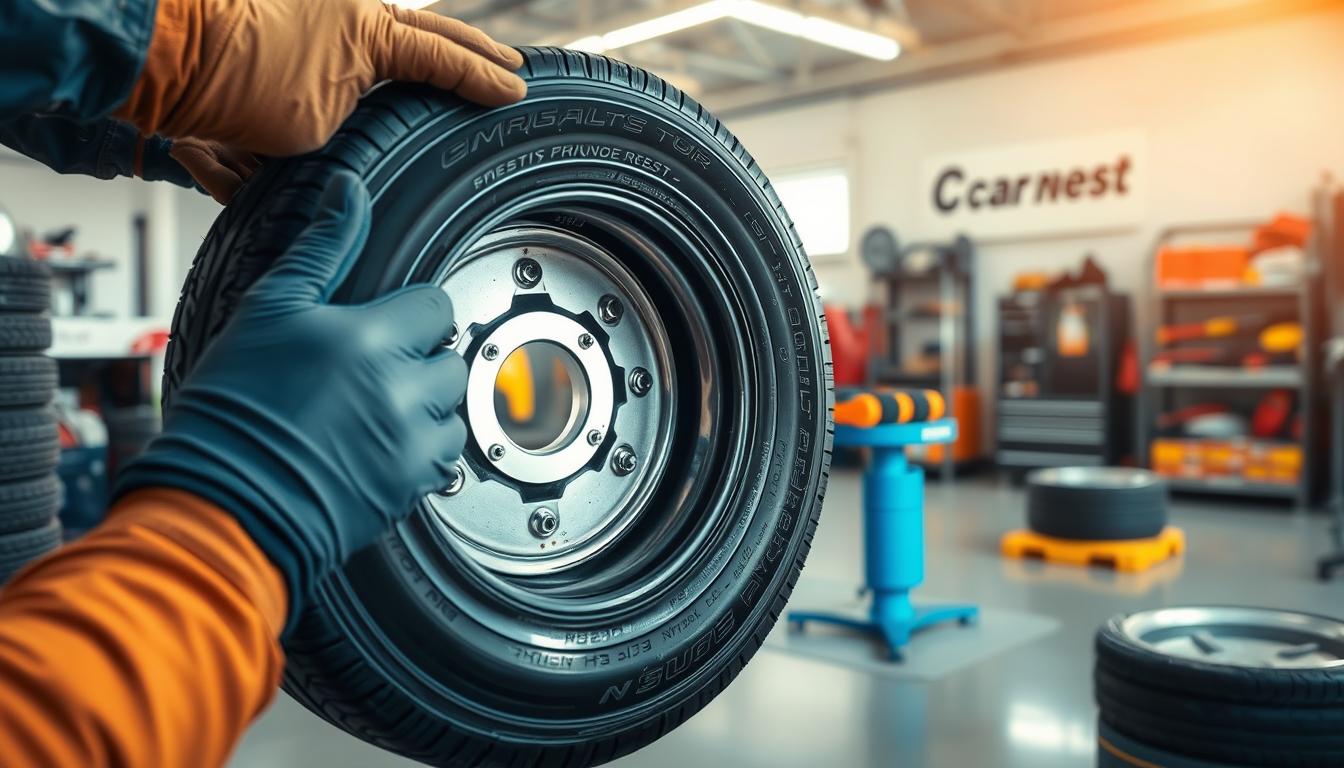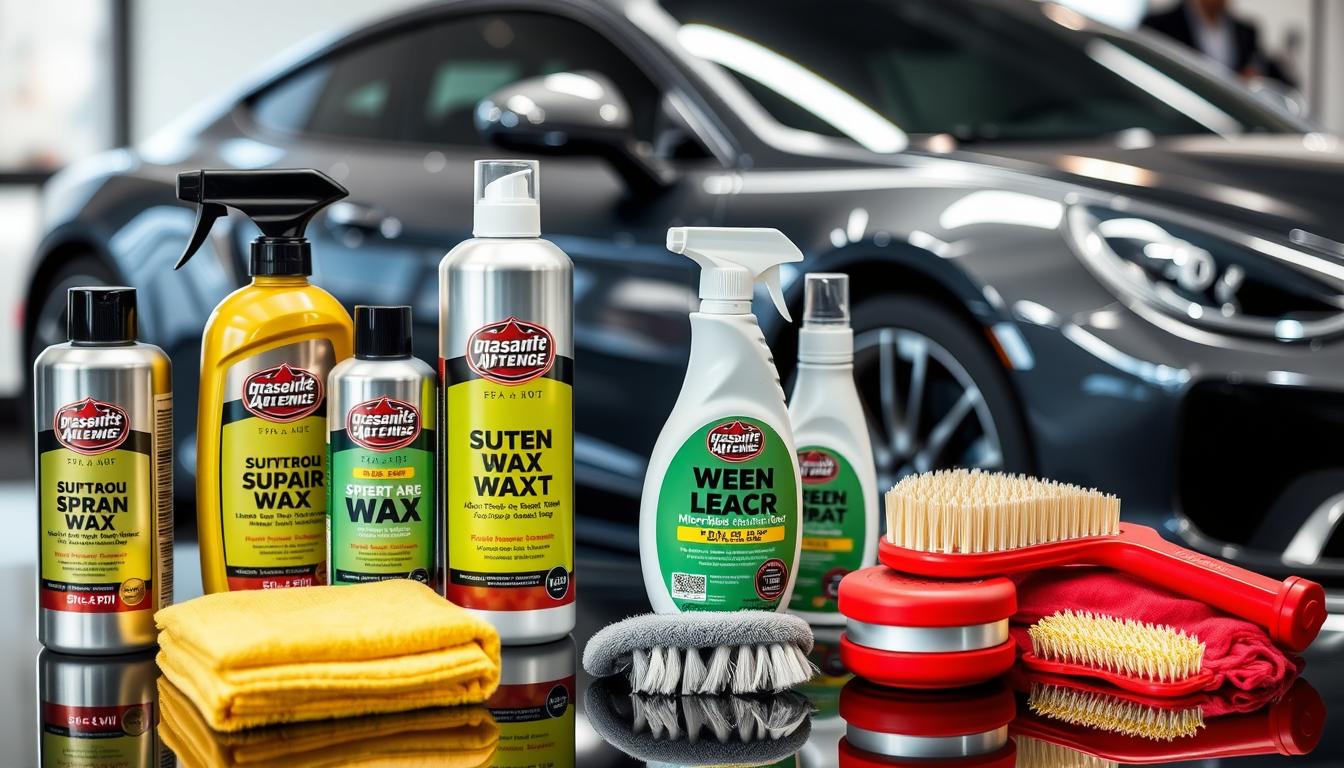Tires are the only point of contact between your vehicle and the road, making their maintenance crucial for safety and performance. Surprisingly, many drivers overlook their tires until they’re worn out, leading to reduced control, decreased fuel efficiency, and a less comfortable ride.
Neglecting tire maintenance can have significant consequences. By understanding the importance of proper tire care, you can avoid these issues and ensure a smoother, safer driving experience. For more detailed information on tire safety and maintenance, you can visit our resource page.
We will guide you through the key aspects of maintaining your tires and how it impacts your vehicle’s overall performance. For personalized advice, you can reach us via WhatsApp at +44-7822010953.
Key Takeaways
- Proper tire care is essential for vehicle safety and performance.
- Neglecting tire maintenance can lead to reduced vehicle control and fuel efficiency.
- Regular tire checks can help extend the life of your tires.
- Maintaining correct tire pressure is crucial for safety and performance.
- Regular rotation and balancing of tires ensure even wear.
Why the Importance of Regular Tire Maintenance Cannot Be Overstated
The significance of regular tire maintenance cannot be overstated for a safe and efficient driving experience. Regular tire maintenance encompasses a range of activities including checking tire air pressure, rotation, alignment, and inspections.
Safety on the Road
Properly inflated tires and regular maintenance ensure safer driving conditions. Underinflated tires can lead to reduced traction, increased stopping distance, and a higher risk of tire failure. By maintaining your tires, you significantly reduce the risk of being involved in a tire-related accident.
Financial Benefits of Proper Tire Care
Regular tire maintenance not only enhances safety but also offers significant financial benefits. Properly maintained tires last longer and improve fuel efficiency, saving you money on gas over time. By avoiding premature tire replacement and reducing the strain on other vehicle components, you can enjoy a more cost-effective vehicle ownership experience.
Understanding Your Tires: The Basics
Understanding the basics of your tires is crucial for maintaining your vehicle’s overall health. Tires are the only contact between your vehicle and the road, making their condition vital for safety and performance.
To maintain your tires effectively, you need to know how they impact your vehicle’s performance and be aware of the signs of wear and damage.
How Tires Impact Vehicle Performance
Tires significantly affect your vehicle’s handling, braking, and fuel efficiency. The condition of your tires can impact how your vehicle responds to steering, accelerates, and brakes. Properly maintained tires ensure optimal vehicle performance and safety.
- Tire condition affects vehicle handling and stability.
- Proper tire maintenance improves fuel efficiency.
Signs of Tire Wear and Damage
Regularly checking your tires for signs of wear and damage is essential. Look for visible damage such as punctures, cuts, or excessive wear. Check the tread pattern to identify uneven wear, which could indicate alignment or suspension issues.
- Check for punctures, cuts, or excessive wear.
- Inspect the tread pattern for uneven wear.
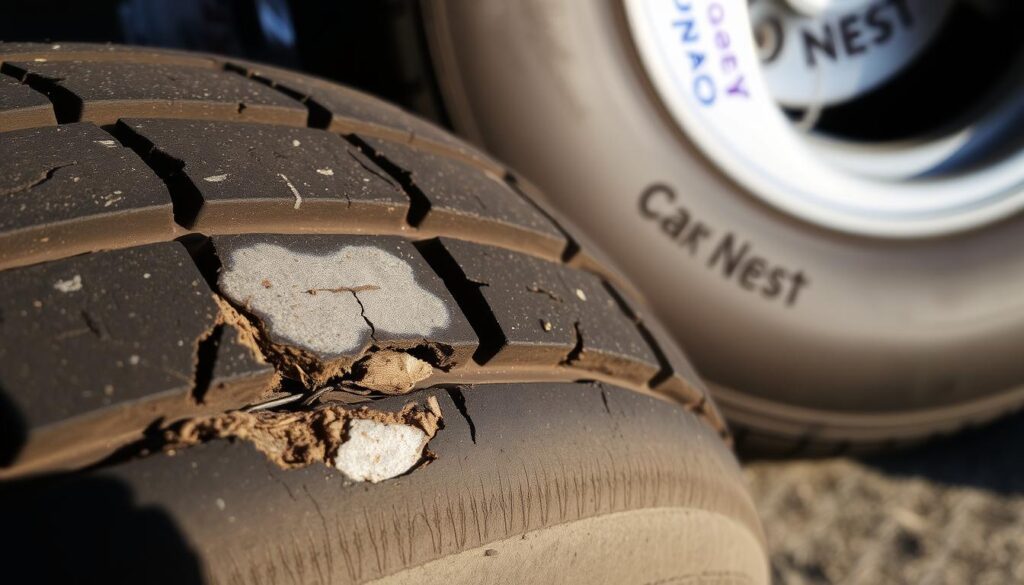
Essential Tire Pressure Maintenance
Regular tire pressure maintenance is essential for preventing uneven tire wear and improving fuel efficiency. Properly inflated tires ensure a smoother ride and better handling. We will guide you through the process of maintaining the correct tire pressure.
Finding the Correct Tire Pressure
To find the correct tire pressure for your vehicle, check the owner’s manual or the tire information placard on the driver’s side doorjamb. This information is also sometimes found on the fuel filler door or inside the trunk lid. Correct pressure is crucial for safety and performance.
How to Check Tire Pressure Properly
To check tire pressure, use a reliable tire pressure gauge. Remove the valve cap, press the gauge onto the valve stem, and take a reading. Compare it to the recommended pressure. It’s best to check pressure when tires are cold.
When and How Often to Check
Check tire pressure at least every 3,000 miles or before a long trip. Seasonal changes can affect tire pressure, so more frequent checks are advisable during transition months. Use the following table as a guide:
| Season | Recommended Check Interval |
|---|---|
| Spring | Every 3,000 miles |
| Summer | Every 1,000 miles or before long trips |
| Autumn | Every 3,000 miles |
| Winter | Every 1,000 miles or before long trips |
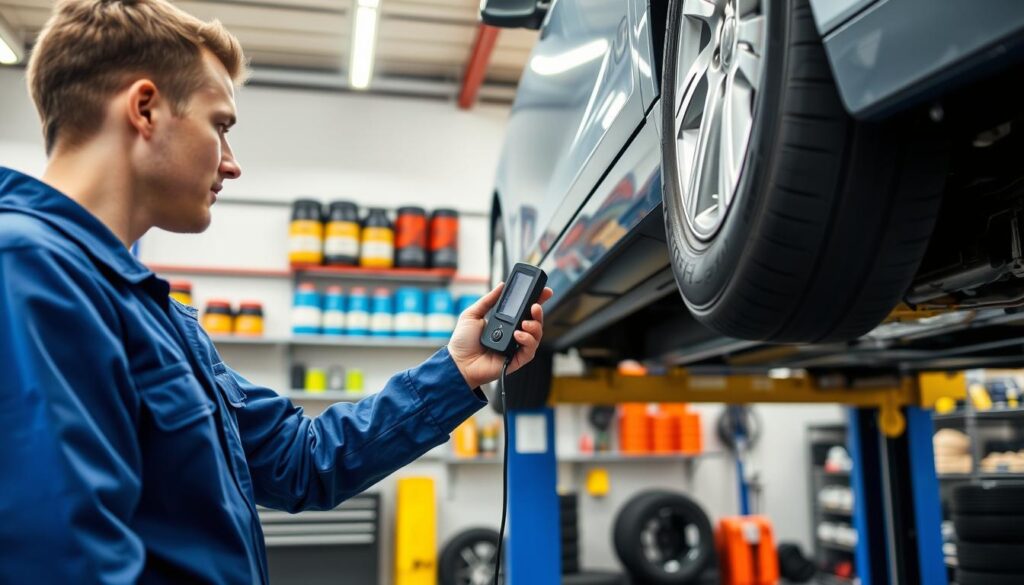
Monitoring Tire Tread Depth
Monitoring tire tread depth is crucial for maintaining vehicle safety and performance. By regularly checking the tread depth, you can identify potential issues before they become major problems.
Why Tread Depth Matters
Tread depth is critical because it directly affects your vehicle’s traction, handling, and braking performance. Inadequate tread depth can lead to reduced grip on the road, especially in wet or slippery conditions.
Simple Methods to Measure Tread Depth
There are several simple methods to measure tread depth. One common method is using a penny. Insert the penny into the tire groove with Lincoln’s head facing down; if you can see the top of his head, the tread is worn out. Another method is using a tread depth gauge, which provides a more accurate measurement.
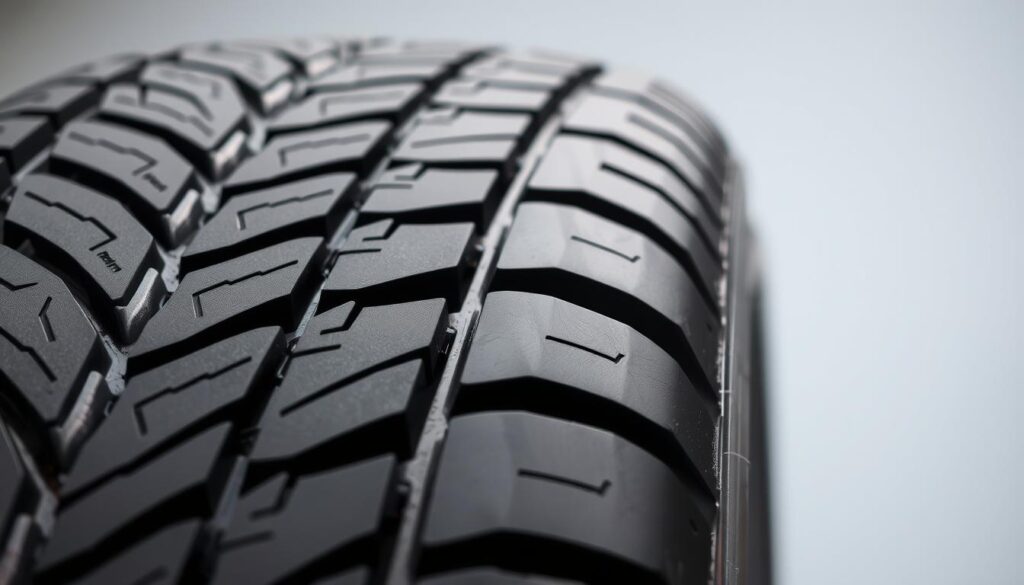
When It’s Time for Replacement
If your tires are unevenly worn or the tread depth is getting too low, it’s time to replace them. The legal minimum tread depth varies, but we recommend replacing tires before they reach this threshold to ensure safety. Factors such as uneven wear patterns and tire age also play a role in determining when replacement is necessary.
| Tread Depth (mm) | Tread Depth (inches) | Status |
|---|---|---|
| 1.6 mm | 2/32″ | Minimum Legal Depth |
| 3 mm | 4/32″ | Recommended Replacement Depth for Wet Conditions |
| 6 mm | 8/32″ | Ideal Depth for Optimal Performance |
The Importance of Regular Tire Rotation
The longevity and performance of your vehicle’s tires depend significantly on regular rotation. By rotating your tires regularly, you ensure that they wear evenly, which is crucial for maintaining traction, handling, and overall safety on the road. For most Subaru models, tire rotation should be done every 6,000 to 8,000 miles. This interval may vary depending on your driving conditions and the type of tires your vehicle is equipped with.
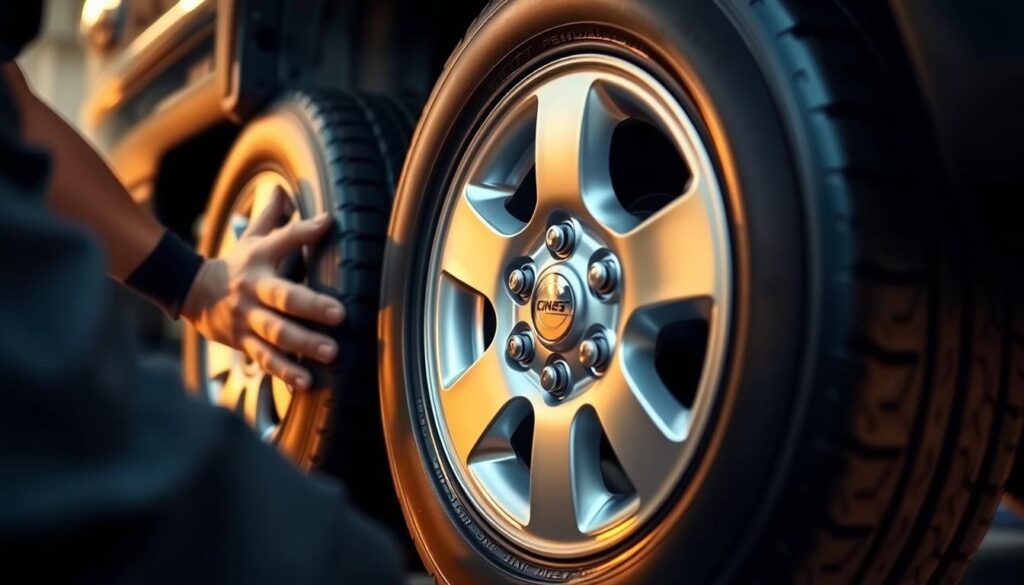
Regular tire rotation is not just about extending the life of your tires; it’s also about ensuring your vehicle runs smoothly and efficiently. Uneven tire wear can lead to reduced fuel efficiency and increased wear on other vehicle components, such as the engine and suspension.
How Rotation Extends Tire Life
Tire rotation helps to distribute the wear evenly across all four tires. By doing so, it prevents any one tire from wearing down too quickly, thereby extending the life of your tires. For instance, front tires often wear faster than rear tires due to the added stress of steering and braking. Rotating your tires every 6,000 miles or so helps to balance this wear.
Recommended Rotation Schedules and Patterns
The recommended rotation schedule can vary based on your vehicle’s drive type. For example, front-wheel drive vehicles typically require a different rotation pattern than all-wheel drive vehicles. We’ll discuss the most common rotation patterns, including those for front-wheel, rear-wheel, all-wheel, and 4-wheel drive vehicles. Additionally, we’ll cover how to modify rotation patterns for directional tires or vehicles with different-sized front and rear tires.
By following the recommended rotation schedule and pattern for your vehicle, you can ensure consistent traction and handling on all four tires, enhancing overall driving safety.
Alignment and Balancing: Often Overlooked Maintenance
Regular alignment and balancing checks are essential maintenance tasks that can significantly impact your vehicle’s handling and fuel efficiency. Misalignment can lead to uneven tire wear, poor handling, and increased fuel consumption. When the wheels are out of alignment, the tires don’t make proper contact with the road, resulting in faster wear and potential safety issues. By staying on top of alignment and balancing, you can prevent these problems and ensure your vehicle runs smoothly.
For more information on maintaining your vehicle, including choosing the right tires, visit our guide on expert advice on choosing the right tires for your.
Signs Your Tires Need Balancing
If your vehicle vibrates excessively, especially at higher speeds, it may be a sign that your tires are out of balance. Other indicators include uneven tire wear and a steering wheel that shakes or wobbles. Regular balancing checks can help identify these issues early on, ensuring a smoother ride and longer tire life.
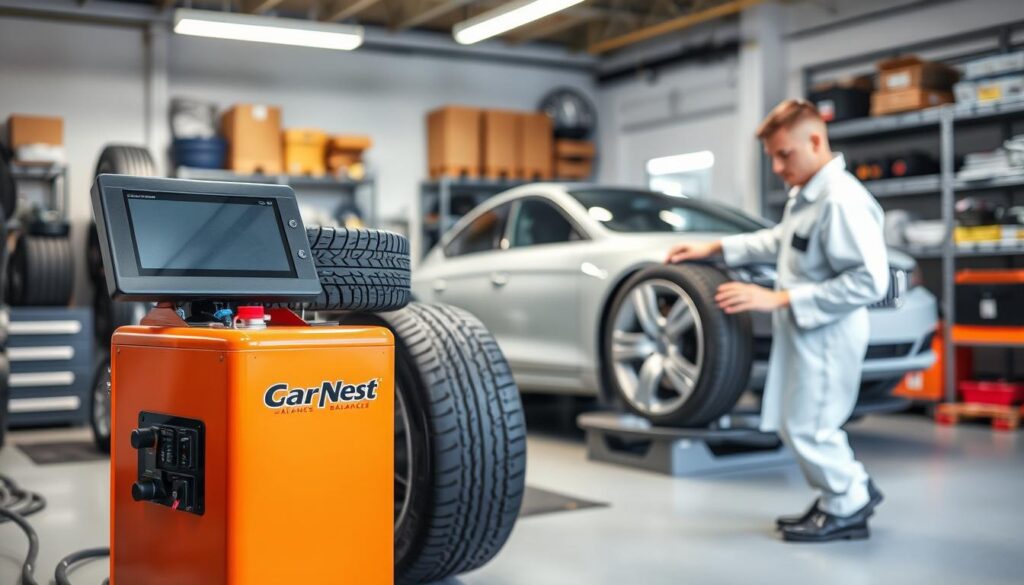
When to Get Wheel Alignment
It’s recommended to check your wheel alignment every 12,000 miles or when you notice irregular tire wear. Certain road conditions, such as hitting potholes or curbs, can also throw off your alignment. By checking your alignment regularly, you can maintain your vehicle’s handling, improve fuel efficiency, and contribute to overall vehicle maintenance.
| Alignment Angle | Description | Impact on Vehicle |
|---|---|---|
| Camber | The tilt of the wheels when viewed from the front | Affects tire wear and handling |
| Caster | The angle of the steering axis when viewed from the side | Influences steering stability and effort |
| Toe | The direction the wheels are pointing when viewed from above | Impacts tire wear and handling |
Conclusion: Maximizing Your Tire Investment
Proper tire care is not just about extending the life of your tires; it’s about enhancing your entire driving experience. By maintaining correct inflation, rotating your tires, and addressing issues promptly, you ensure your vehicle runs safely and efficiently. Regular tire maintenance is an investment in your vehicle’s performance and your safety on the road. For a comprehensive maintenance schedule, refer to your vehicle’s owner manual or visit our guide on car maintenance schedules. By prioritizing tire care, you’re taking control of your driving experience. For personalized advice, feel free to contact us on WhatsApp at +44-7822010953. Make sure to check your tire pressure regularly and maintain your vehicle’s overall health.
